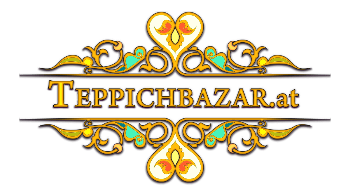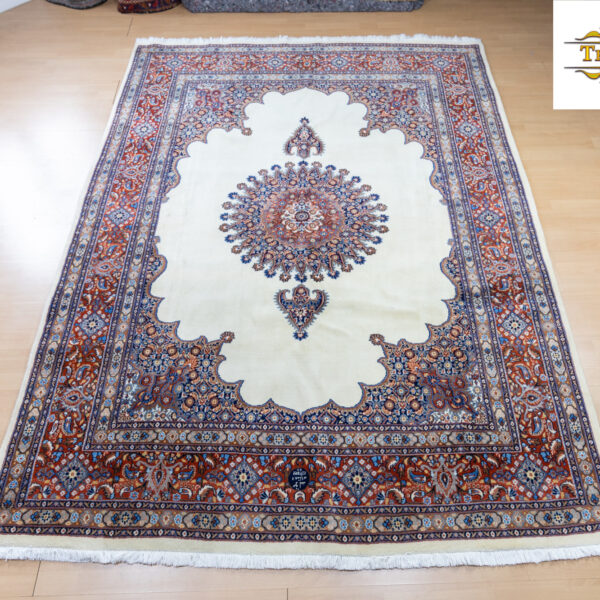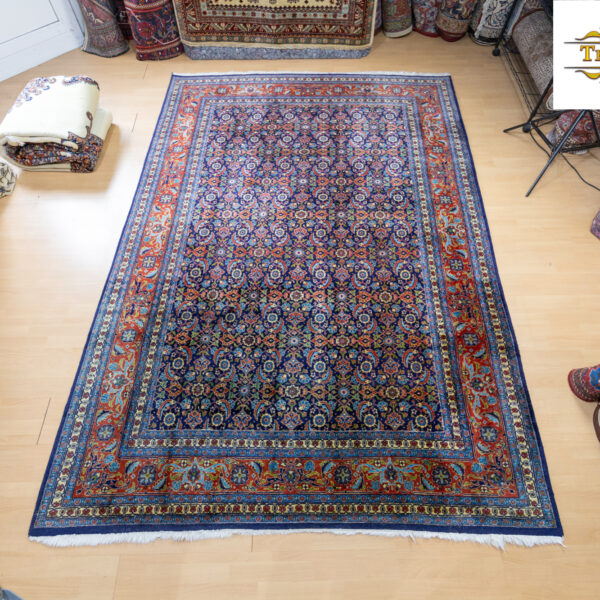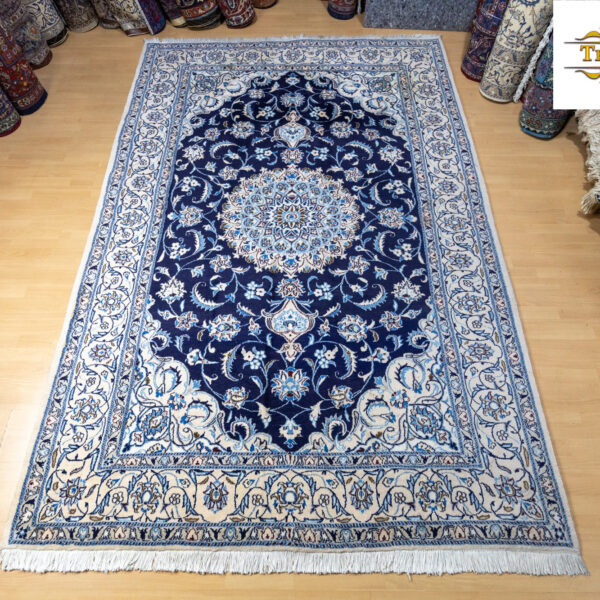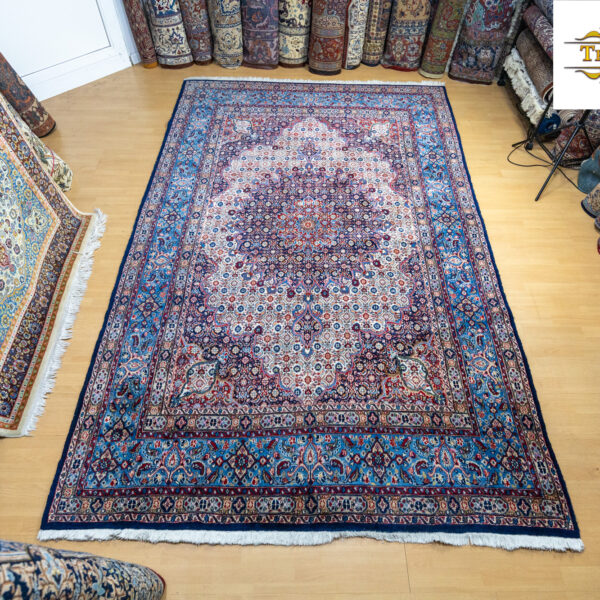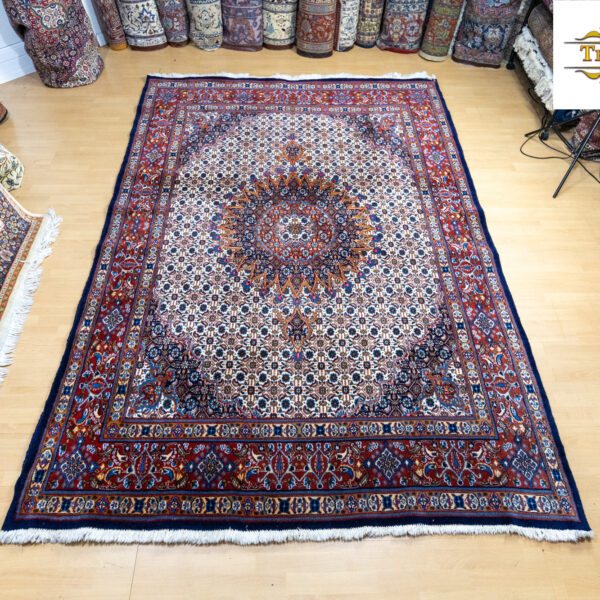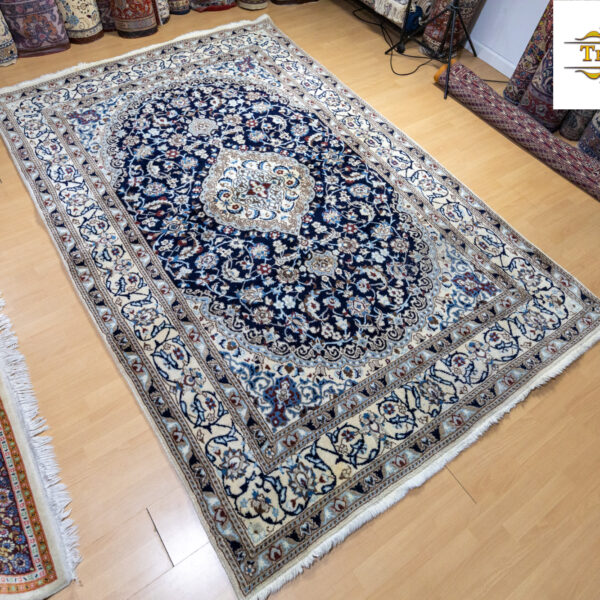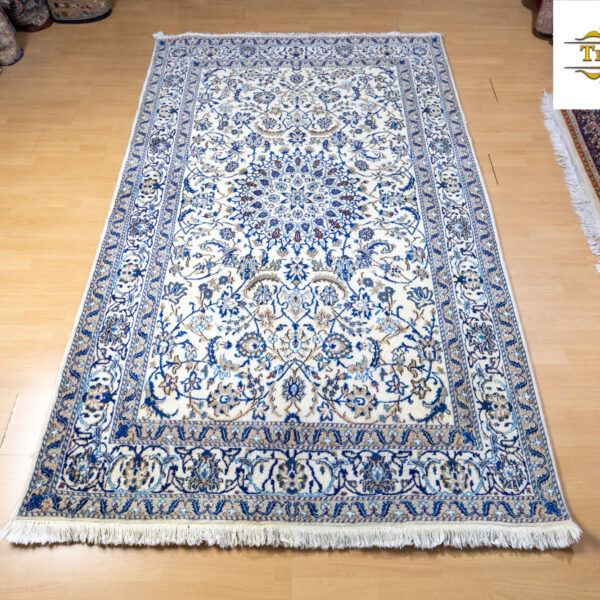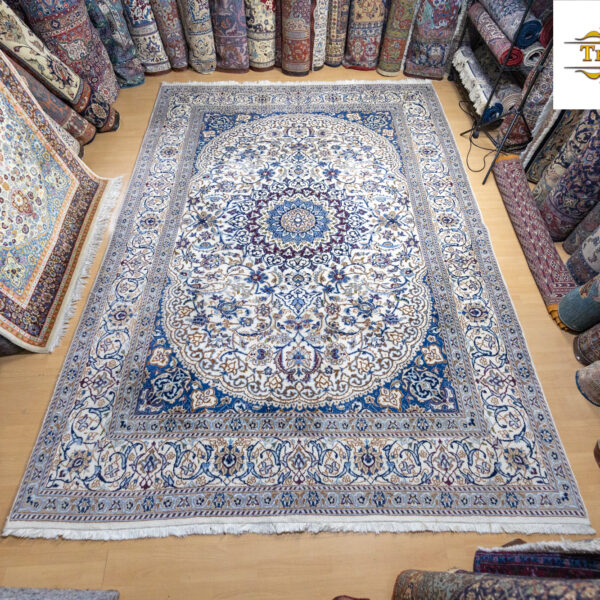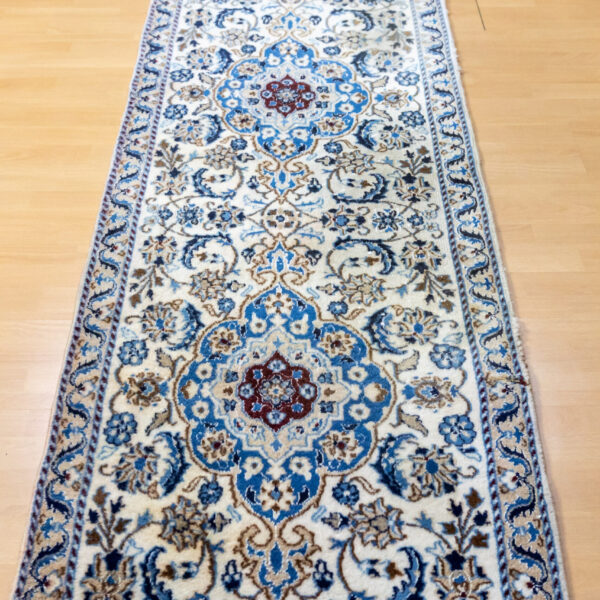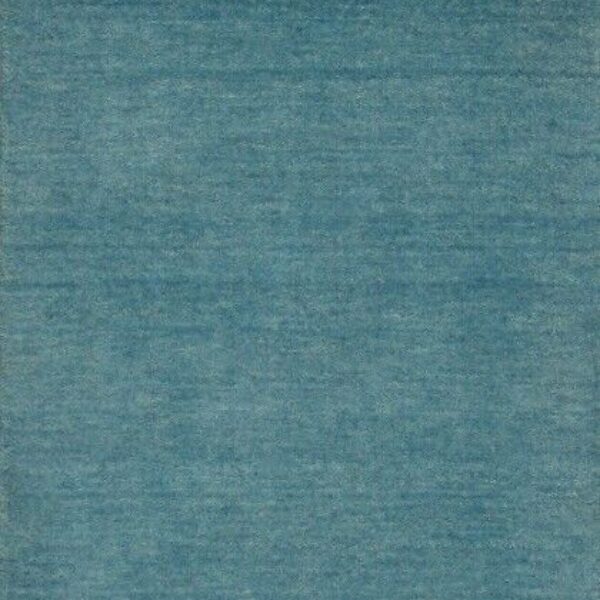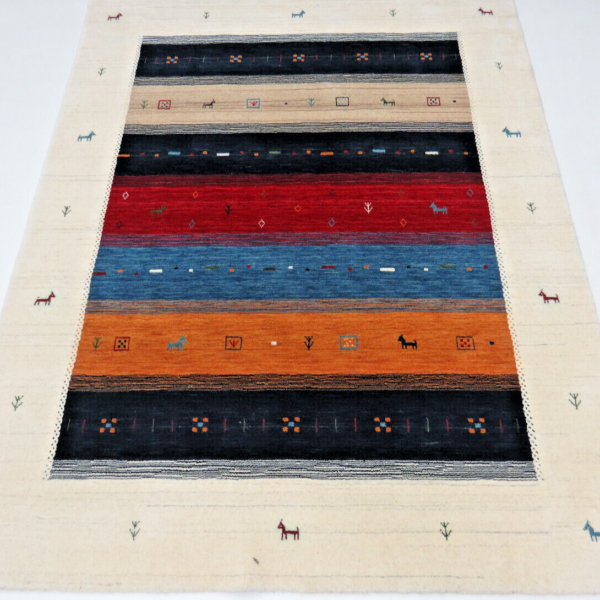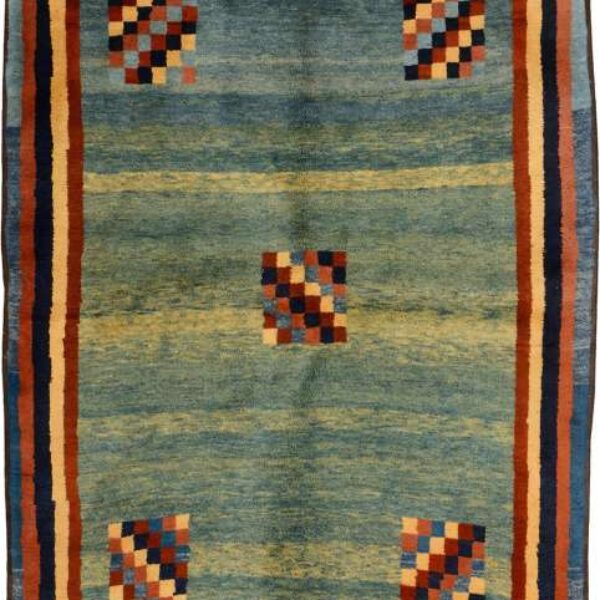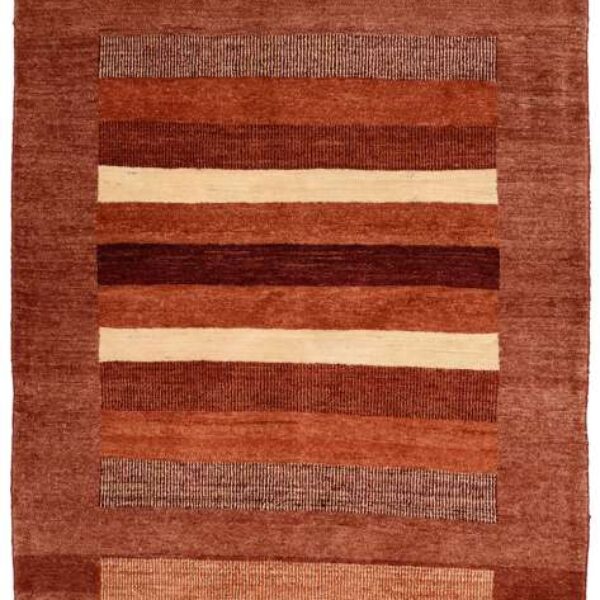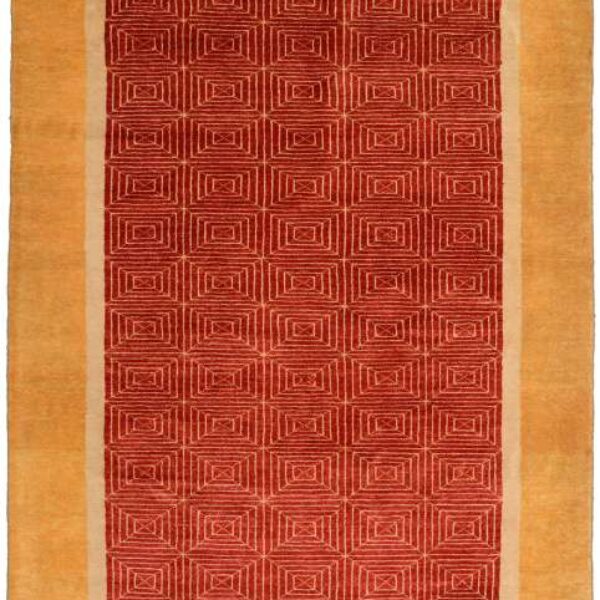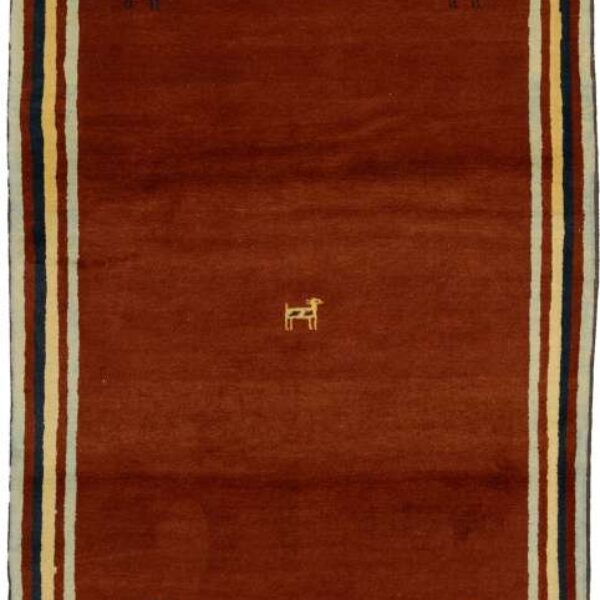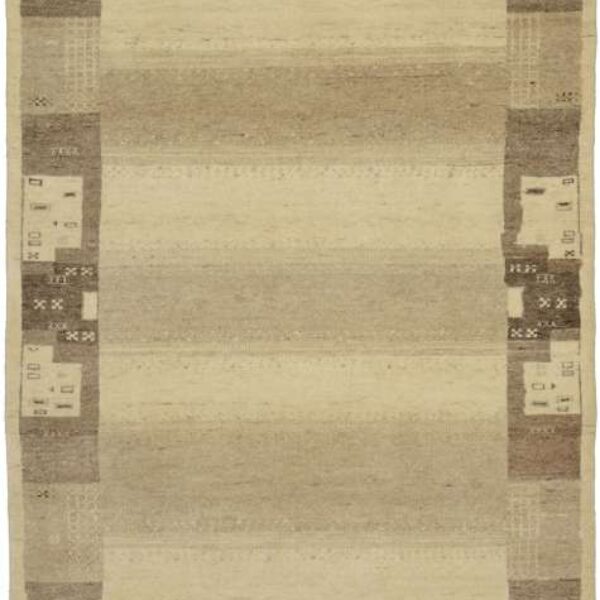Gabbeh carpets
Gabbeh carpets
Gabbeh or Gabba is one of the warmest and most creative types of oriental rugs. Her design is an excellent example of how beautiful simplicity is. These designs are usually very simple, with geometric patterns or symbolic shapes.
Some Gabbeh rugs are known for having large open fields and most of them have only a few color combinations. The vegetable dyes used to make Gabbeh rugs give them a very bold and vibrant appearance.
Story of Gabbeh
Gabbeh rugs are handmade rugs traditionally woven by Qashqa'i and Luri weavers in the Zagros Mountains of southern Iran. The peculiarity of these rugs is that they are thicker and coarser than other types of Persian rugs.
The pile can sometimes reach 1′ thick. These rugs are made from handspun local sheep's wool and vegetable dyes and have a relatively low knot density.
What is a Gabbeh rug?
The word Gabbeh means rough, unpolished or unfinished. Until recently, this was quite an apt description of these roughly knotted rugs, made by weavers for personal use rather than commercial purposes. However, this definition does not do justice to today's versions.
There is nothing gross, subtle or understated about modern Gabbeh rugs. These latest variants are full of bright colors and bold patterns, and the weavers let their creativity run free.
The only thing that has remained unchanged is the unmistakable uniqueness of each carpet.
Inspiration from everyday life
Although today's gabbeh rugs represent an improvement over their more traditional counterparts, their patterns and designs have not changed significantly over the years. The weavers still don't follow a pattern. Instead, they draw inspiration from their surroundings and daily life, which contributes to their unique designs.
There is a story behind every design. Some rugs simply depict the landscape that moved or inspired the weaver, while other designs can tell a story or convey the weaver's emotions with symbols and figures that represent part of his or her narrative.
It is this inherently personal and unsystematic process that makes a gabbeh a totally unique work of art and distinguishes it from many other styles of weaving or knotting in carpet making. This also makes it difficult to classify the designs of these rugs as they do not follow any set rules.
The designs are usually very simple, with a limited number of decorative objects, mostly rectangular depictions of various animals.
Some bolder pieces have no discernible pattern at all. They are woven in a wide range of solid colors, with the quality of the wool and the color variations determining the design elements. Most varieties have a "barber pole" edge, where the edges are wrapped in two different colors.
Natural colors add charm
Strong, bright colors - orange, red, rust and yellow - are the hallmark of Gabbeh rugs. Only organic dyes are used. The dyes are extracted from plants and roots native to the Zagros Mountains and made according to traditional recipes developed over centuries.
The raw materials used to create these beautiful colors include madder root, pomegranate shells, indigo and walnut shells, among others.
The irregularities in the dyes result in a collage of color variations rather than a uniform colour, giving these rugs their rich texture and underscoring their distinctive nomadic origin and spirit.
Persian Gabbeh
The wool used to make Persian Gabbeh is probably the finest in the world.
The long-fibre wool gives these rugs a natural sheen and an incomparable softness.
The dense pile provides excellent acoustics and a warm, soft surface for feet.
Indian Gabbeh
Indian Gabbeh are inspired by the Persian originals.
Woven in India from soft, long-staple wool, these rugs feature bright colors and simple geometric shapes reminiscent of Qashqa'i rugs from Iran.
The only difference is that the Indian variants are a bit stiffer and show little if any color variation as the natural dyes used in the original carpets are not available.
Pakistani Gabbeh
The Pakistani Gabbeh are similar in design to the Persian Qashqa'i, but are woven with fine Australian wool yarns, so they are of the highest quality and resemble silk rugs.
The high knot density ensures longer durability at a lower price than the Persian versions.
Typical Gabbeh designs
The basic style consists of a mostly open field and large geometric shapes such as triangles and rectangles in the field area of the rug.
The panel style incorporates small to medium width borders at the edge of the rug and repeating geometric panels throughout the field. The repeated panels are usually square or triangular.
The striped style is characterized by horizontal and sometimes vertical stripes that extend across the entire field of the rug.
The open field style has a wide, open field with repeating square shapes forming the border.
Gabbeh rugs are knotted by nomadic tribal weavers living in the Zagros Mountains. Originally, these rugs were woven by the tribesmen for personal use to protect themselves from the harsh winters in this region. The eye-catching designs and rich colors of these rugs soon made them popular with homeowners and rug collectors around the world.
Facts about Gabbeh rugs
Gabbeh rugs are mainly knotted by tribal women. These weavers use their personal experiences, thoughts and feelings to inspire their unique creations.
The looms used by the weavers are of the horizontal type. These looms are simpler, but can be easily and quickly folded and packed away when the tribe moves to a new location.
Gabbeh rugs are all natural. The wool for these rugs is obtained from their own sheep shearers, and the dyes for the rugs are derived from parts of plants native to the region such as walnut shells, indigo, madder root and pomegranate peel. No synthetic elements are used in the manufacture of these rugs.
Distinguishing features
Gabbeh rugs are easily recognized based on a number of characteristics. These rugs generally have a very dense pile. Gabbeh rugs with a pile thickness of up to 15 centimeters are not uncommon. These rugs have a knot count of between 40 and 60 kpi, which is very low compared to most other types of oriental rugs.
The weavers generally created simple geometric patterns in bright colors that are spread throughout the rug. These patterns were randomly placed on the carpet. If you are sold a gabbeh with a symmetrical pattern, you need to double check it. Rarely does one see a Gabbeh rug in which the patterns are arranged symmetrically. Most motifs relate to a story or depict tribal folklore.
Categories of Persian Gabbeh carpets
Persian Gabbeh rugs fall into five categories:
Basic Gabbeh - These rugs have a very low knot count and a dense pile. The pattern is generally very simple, with simple geometric shapes in bright colors or tribal patterns set in large open spaces.
Kashkoli Gabbeh - Kashkoli rugs have a shorter, softer pile and higher knot density than plain Gabbeh. However, they remain true to the simple geometric shapes and bright colors.
Luribaft Gabbeh - These rugs have a soft, relatively short pile and a unique sheen that comes from the dense, fine weave and high-quality wool. The patterns are more detailed and sophisticated than most other gabbeh categories.
Gabbeh Sumak - Gabbeh Sumak are flat woven rugs. You don't have a bunch. The weavers weave the colorful patterns into the base fabric of the rug, which sets it apart from all other gabbeh.
Gabbeh Amalehbaft - These rugs are characterized by a medium weave, shorter pile and very colorful yet simple and basic patterns.
Anyone who owns a Gabbeh from any of these categories knows that he or she owns a unique, all-natural rug of tribal beauty.
“Errors and mistakes excepted”
